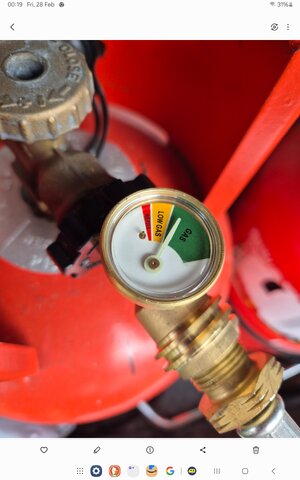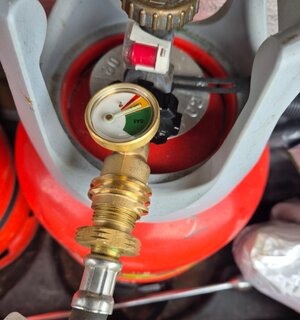I suspect you do not understand how Liquified Petroleum Gas (LPG) cylinders work, and that has an important effect on what a pressure gauge will show.
This is a simplified explanation:
Pressure in a cylinder of LPG will go up if the cylinder temperature rises and fall if the temp falls The pressure is determined by the vapour pressure of the gas.
Normally there will be both vapour and liquefied gas in the cylinder. The liquefied gas will boil off to create the vapour and maintain the cylinder pressure. A pressure gauge cannot tell if the cylinder is full or part empty. Only when all the liquefied gas has boiled off leaving just gas vapour in the cylinder The pressure will drop more dramatically as the final gas vapour is drawn off.
For more complex reasons the faster you use gas from a cylinder the cylinder will actually cool down, and that can cause external water vapour to condense on the cylinder which can reveal the level of the remaining liquified gas. In extreme cases for Propane the cylinder will cool down enough to cause frost to form on the out side of the cylinder.
The most accurate way of determining how full a cylinder of LPG is to weigh it and subtract the TARE weight (which is usually stamped on the collar around the gas valve) to reveal weight of the remaining content.





